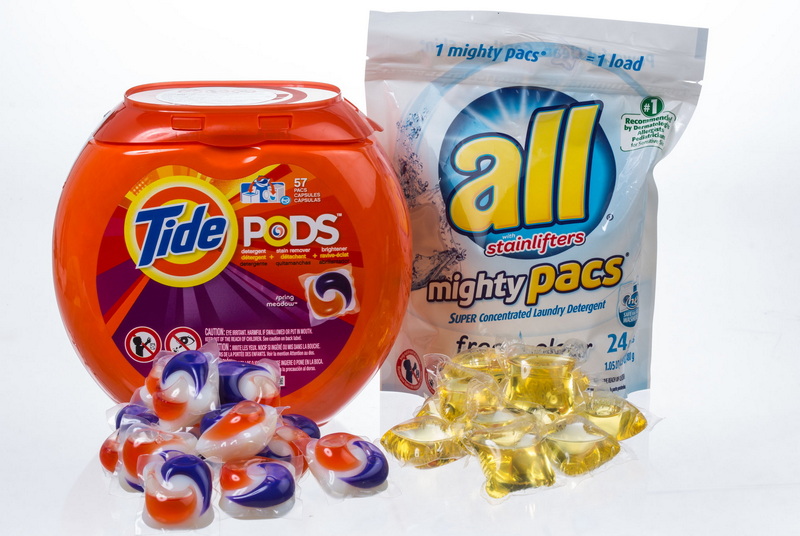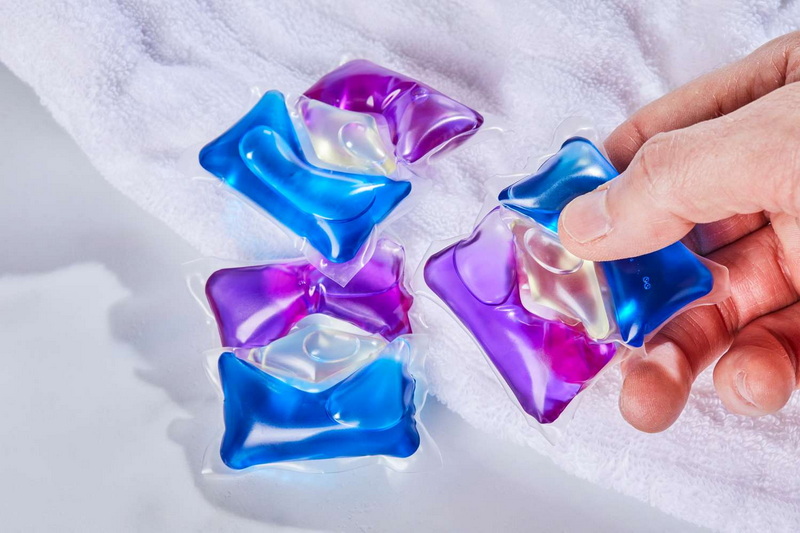Dongguan UFine Daily Chemical Co.,Ltd.
- All
- Product Name
- Product Keyword
- Product Model
- Product Summary
- Product Description
- Multi Field Search
Views: 222 Author: Tomorrow Publish Time: 11-23-2025 Origin: Site











Content Menu
● What Are Laundry Detergent Pods?
● Why Are Laundry Detergent Pods Dangerous to Ingest?
● Symptoms Immediately After Ingestion
● Health Risks and Long-Term Complications
● What To Do If Someone Drinks Laundry Detergent Pods
● Preventing Laundry Detergent Pod Poisonings
● Expanded Content: Medical Studies and Statistics
● How Do Laundry Detergent Pods Compare to Traditional Detergents?
● FAQ
>> 1. What are the first signs if someone drinks a laundry detergent pod?
>> 2. How dangerous are laundry detergent pods compared to regular detergents?
>> 3. Can swallowing a laundry pod cause permanent damage?
>> 4. Should vomiting be induced after ingestion?
>> 5. How can parents keep children safe from laundry pods?
Laundry detergent pods, while convenient for laundry, pose significant health risks if ingested. These pods contain concentrated, potent cleaning chemicals enclosed in a water-soluble film. This article discusses what happens if laundry detergent pods are swallowed, symptoms to watch for, treatment approaches, long-term effects, how to prevent ingestion, and answers to common questions.

Laundry detergent pods are small, colorful packets containing highly concentrated liquid detergents. The outer film dissolves in water, releasing powerful surfactants, enzymes, and bleach agents designed to clean clothes effectively. Their compact, candy-like appearance can be misleading, especially to children.[11][12]
Pods have a much higher concentration of cleaning agents than traditional liquid detergents. If swallowed, these chemicals cause burns and irritation to delicate tissues in the mouth, throat, esophagus, stomach, and lungs if aspirated. Their attractive colors and packaging may lure young children into accidental ingestion.[13][14][11]
After swallowing a pod, symptoms can rapidly develop:
- Mouth and Throat: Intense burning, redness, swelling, pain, and drooling.
- Digestive Tract: Nausea, vomiting (sometimes forceful), abdominal pain, and difficulty swallowing.
- Respiratory System: Coughing, choking, wheezing, rapid or labored breathing, and risk of respiratory distress or failure if the detergent is aspirated.
- Neurological: Lethargy, drowsiness, confusion, or in rare severe cases, seizures or coma.
- Eye and Skin Exposure: Redness, pain, or burns if pods rupture near the face.[3][5][13]
Laundry detergent pod ingestion can cause serious complications:
- Esophageal Injury: Chemical burns and ulcers can cause painful swallowing and sometimes lead to long-term swallowing dysfunction.
- Respiratory Problems: Aspiration of detergent can cause inflammation, pneumonitis, and potentially respiratory failure.
- Metabolic and Systemic Effects: Such as acidosis from toxin absorption.
- Potential Need for Surgery: To repair damage to the esophagus if severe injury occurs.
- Death: Though rare, fatalities have been reported with large ingestions or delayed treatment.[1][5][15]
If ingestion occurs:
1. Do Not Induce Vomiting: This may worsen injury.
2. Rinse Mouth: Rinse thoroughly with water if the person is conscious and able.
3. Call Poison Control or Emergency Services Immediately: Provide details about the product and amount ingested.
4. Follow Medical Instructions: Treatment could include supportive care, endoscopy to check for damage, respiratory support, and monitoring for complications.
5. Hospitalization May Be Required: Especially in young children or if symptoms are severe.[16][11]

- Store detergent pods well out of reach and sight of children, ideally in locked cabinets.
- Use child-resistant containers and latches on pod packaging.
- Educate all household members about the dangers of pods.
- Avoid transferring pods to other containers that resemble candy jars.
- Monitor children's activities, especially with social media challenges promoting detergent pod ingestion.[4][14][17]
Laundry detergent pods have been linked to a significant number of poisonings, especially in children under 6 years old. Studies show that from 2012 through 2013, poison control centers logged over 17,200 exposures in young children in the U.S., with many requiring hospitalization. Vomiting, coughing, and eye irritation were common symptoms. Packaging improvements have been implemented by manufacturers, but incidents remain frequent.
Research underscores that pod exposures result in more severe symptoms than traditional liquid detergents, likely because of the pods' concentrated contents and delivery method. Esophageal injuries without visible mouth lesions have been documented, highlighting the need for medical assessment after ingestion. Conjunctivitis and chemical burns from skin or eye exposure are other serious issues linked to pod mishandling.[2][7][10][4]
| Aspect | Laundry Detergent Pods | Traditional Liquid Detergents |
|---|---|---|
| Chemical Concentration | Higher (more concentrated formula) | Lower concentration |
| Appearance | Colorful, candy-like, attractive | Usually opaque bottles, less appealing to children |
| Risk of Ingestion | Higher in young children due to appearance | Lower risk due to packaging and presentation |
| Severity of Poisoning | More severe symptoms and complications | Usually milder symptoms |
| Packaging | Often transparent pods or pouch | Usually opaque, child-resistant bottles |
This comparison illustrates why pods pose greater poisoning risks and warrant enhanced safety measures.[6][18]
Ingesting laundry detergent pods constitutes a serious health emergency due to the pods' highly concentrated, corrosive chemical contents. Immediate symptoms include oral burns, vomiting, respiratory distress, and potential neurological impairment. Long-term complications, including esophageal damage and breathing difficulties, can occur especially in children under 5. Immediate medical evaluation is critical to managing exposure. Preventative actions such as secure storage, packaging improvements, and public awareness are essential to reduce poisoning incidents.

Burning mouth and throat, nausea, vomiting, coughing, and difficulty breathing are common early signs.[3][13]
Pods are more dangerous due to their concentrated chemicals and attractive appearance leading to higher ingestion risk and more severe symptoms.[14][6]
Yes, chemical burns in the esophagus may cause long-term swallowing problems requiring medical treatment or surgery.[5][1]
No, inducing vomiting can worsen tissue damage; seek emergency medical care immediately.[11][16]
Store pods in locked cabinets, use child-resistant containers, educate family, and monitor children's activities, especially related to social media trends.[17][4]
[1](https://en.wikipedia.org/wiki/Consumption_of_Tide_Pods)
[2](https://www.nationwidechildrens.org/newsroom/news-releases/2014/11/new-study-finds-laundry-detergent-pods-a-serious-poisoning-risk-for-children-younger-than-6-years)
[3](https://www.poison.org/articles/laundry-detergent-pods-and-children)
[4](https://www.cdc.gov/mmwr/preview/mmwrhtml/mm6141a1.htm)
[5](https://pmc.ncbi.nlm.nih.gov/articles/PMC4141927/)
[6](https://info.childcareaware.org/blog/laundry-pods-pose-ingestion-risk-to-children)
[7](https://pmc.ncbi.nlm.nih.gov/articles/PMC7726599/)
[8](https://www.emra.org/emresident/article/laundry-pod-challenge)
[9](https://www.acmt.net/wp-content/uploads/2022/06/FAQ_Detergent-Pods.pdf)
[10](https://www.nationwidechildrens.org/research/areas-of-research/center-for-injury-research-and-policy/injury-topics/home-safety/laundry-pods)
[11](https://www.tenethealth.com/healthy-living/corporate-content/poison-alert-laundry-detergent-pods)
[12](https://stppgroup.com/the-science-and-safety-of-laundry-detergent-pods-a-comprehensive-guide/)
[13](https://www.texaschildrens.org/content/wellness/dangers-consuming-laundry-detergent-pods)
[14](https://www.poison.org/articles/liquid-laundry-detergent)
[15](https://www.mountsinai.org/health-library/poison/detergent-poisoning)
[16](https://www.emdocs.net/toxcard-laundry-detergent-pods-ldps/)
[17](https://vetexplainspets.com/what-would-happen-if-i-drank-laundry-detergent/)
[18](https://pubmed.ncbi.nlm.nih.gov/31130018/)